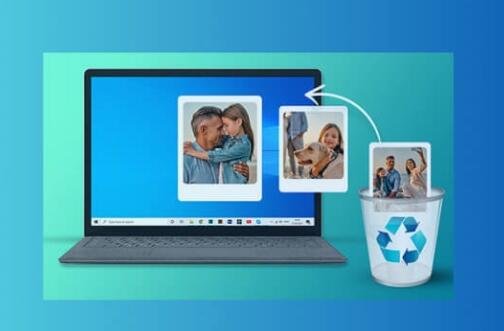The loss of precious memories captured in photographs can be heartbreaking, especially if those photos were deleted years ago. Whether it’s due to accidental deletion, formatting of a device, or a malfunctioning storage medium, the desire to recover those lost images is universal.
When you delete a photo, it is not immediately removed from the storage device. Instead, the space it occupies is marked as available for new data. As a result, until that space is overwritten, the deleted photo may still be recoverable. Understanding this principle is crucial when attempting recovery.
Types of Storage Devices
Digital Cameras: Photos are stored on memory cards (SD cards, CF cards).
Smartphones: Photos are usually stored in internal memory or on microSD cards.
Computers: Photos are saved on hard drives (HDDs or SSDs) or external drives.
Cloud Storage: Services like Google Drive, Dropbox, or iCloud may have backups of your photos.

Factors Affecting Photo Recovery
Time: The longer you wait to attempt recovery, the higher the chance that the deleted files have been overwritten.
Usage: If you have continued using the device after deletion, the likelihood of overwriting the deleted photos increases.
Type of Deletion: Emptying the recycle bin or formatting a storage device can complicate recovery.
Steps to Recover Deleted Photos
Step 1: Stop Using the Device
The first and most important step is to stop using the device from which the photos were deleted. This prevents new data from overwriting the deleted photos. If the photos were on a memory card or external hard drive, remove it from the device immediately.
Step 2: Check the Recycle Bin or Trash
Before diving into more complex recovery methods, check the Recycle Bin (Windows) or Trash (Mac). If the photos were recently deleted, they may still be there.
Step 3: Explore Backup Options
Many devices and services automatically back up photos. Check if you have:
Cloud Backups: Services like Google Photos, iCloud, or OneDrive may have saved copies of your images.
Device Backups: Check your phone or computer for backups that may contain the lost images.
Step 4: Use Recovery Software
Panda Assistant stands out as an innovative solution. This user-friendly software is designed to help individuals and businesses recover lost or deleted files with ease.
Key Features
1. Versatile Recovery Options
Panda Assistant offers comprehensive recovery options that cater to various storage devices, including external hard drives, USB flash drives, memory cards, and even SSDs. It supports multiple file formats, allowing users to recover photos, documents, videos, and more, ensuring that you can restore your most important data, regardless of its type.
2. Intuitive User Interface
One of the standout features of Panda Assistant is its intuitive user interface. The software is designed with the user in mind, making it accessible for individuals of all tech levels. Users can easily navigate through the recovery process, select the target device, and initiate a scan without requiring any technical expertise.
3. Deep Scanning Technology
Panda Assistant employs advanced deep scanning technology to thoroughly search your storage devices for recoverable files. This technology increases the chances of finding files that may have been lost for an extended period, making it particularly effective for recovering data that may have been deleted years ago.
4. Preview and Selective Recovery
Before restoring files, Panda Assistant allows users to preview recoverable items. This feature ensures that you can select only the files you need, saving time and storage space. You won’t have to recover unnecessary files, making the process efficient and tailored to your needs.
5. Customer Support and Resources
Panda Assistant offers robust customer support, including tutorials, FAQs, and direct assistance. Whether you have a question about installation or need help with the recovery process, their support team is ready to assist you.
Step 5: Follow Software Instructions
When using recovery software, follow these general steps:
Download and Install: Install the recovery software on a different drive than the one you are trying to recover from to prevent overwriting.
Scan the Device: Launch the software and select the drive where the photos were stored. Initiate a scan.
Preview Recoverable Files: After the scan, the software will display recoverable files. Preview the photos to verify if they are the ones you want to recover.
Recover the Files: Select the desired photos and choose a safe location to recover them (not on the same drive).
Advanced Recovery Methods
If software recovery fails, you might consider professional data recovery services. Here are a few options:
Data Recovery Labs: These specialized labs have advanced tools and techniques to recover lost data, but services can be expensive.
Consult a Professional: If you are uncomfortable with software or DIY methods, consult a professional data recovery specialist.
Preventive Measures for the Future
To avoid future photo loss, consider these preventive measures:
Regular Backups: Use cloud services and external hard drives to regularly back up your photos.
Enable Automatic Backups: Many devices offer automatic backup options that can save your photos regularly.
Organize Your Files: Regularly organize and clean your files to minimize accidental deletions.
About us and this blog
Panda Assistant is built on the latest data recovery algorithms, ensuring that no file is too damaged, too lost, or too corrupted to be recovered.
Request a free quote
We believe that data recovery shouldn’t be a daunting task. That’s why we’ve designed Panda Assistant to be as easy to use as it is powerful. With a few clicks, you can initiate a scan, preview recoverable files, and restore your data all within a matter of minutes.
Subscribe to our newsletter!
More from our blog
See all postsRecent Posts
- Dell backup and recovery windows 11 2025-04-21
- Dell os recovery tool keeps crashing 2025-04-21
- Raw hdd data recovery 2025-04-21

 Try lt Free
Try lt Free Recovery success rate of up to
Recovery success rate of up to









